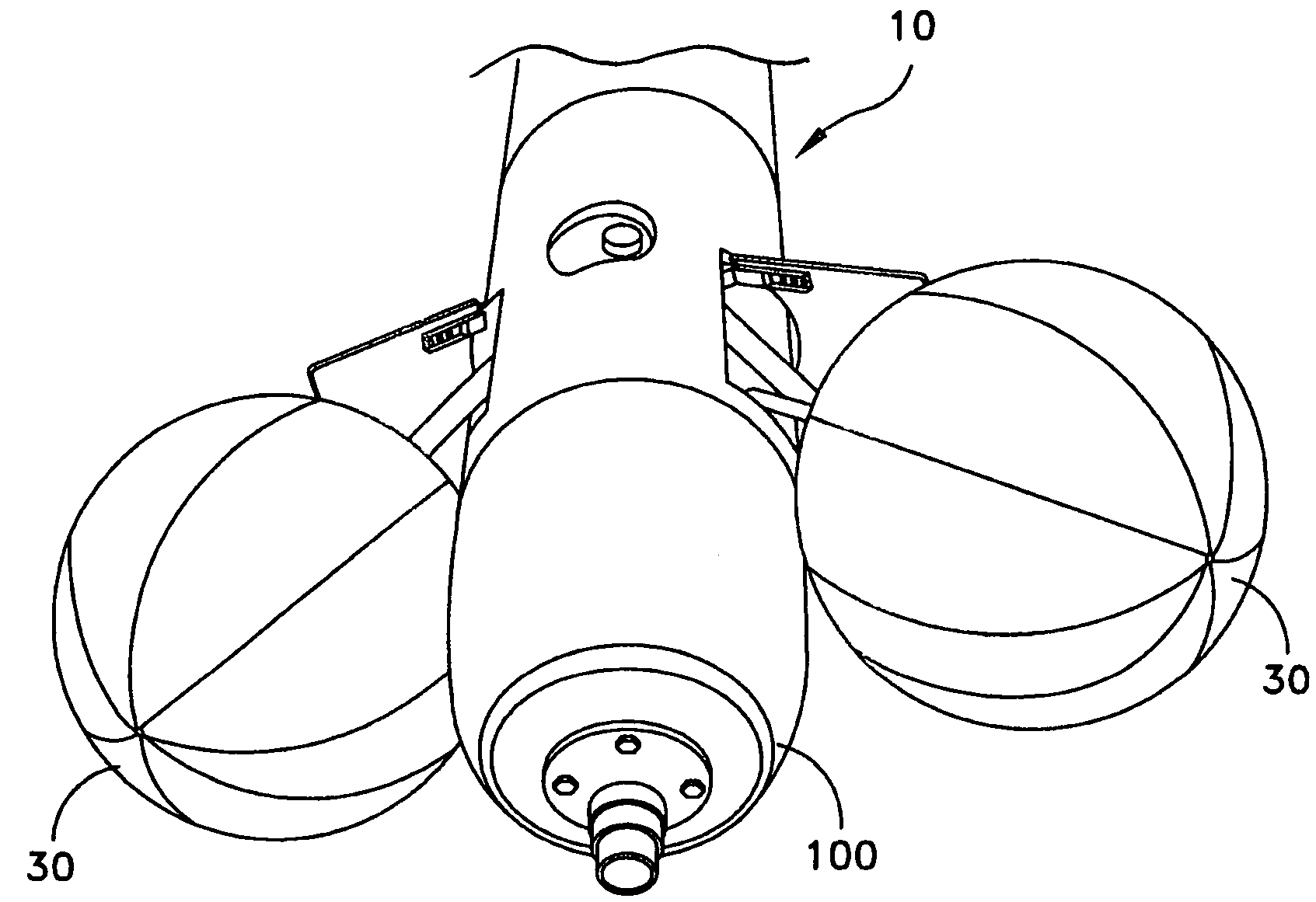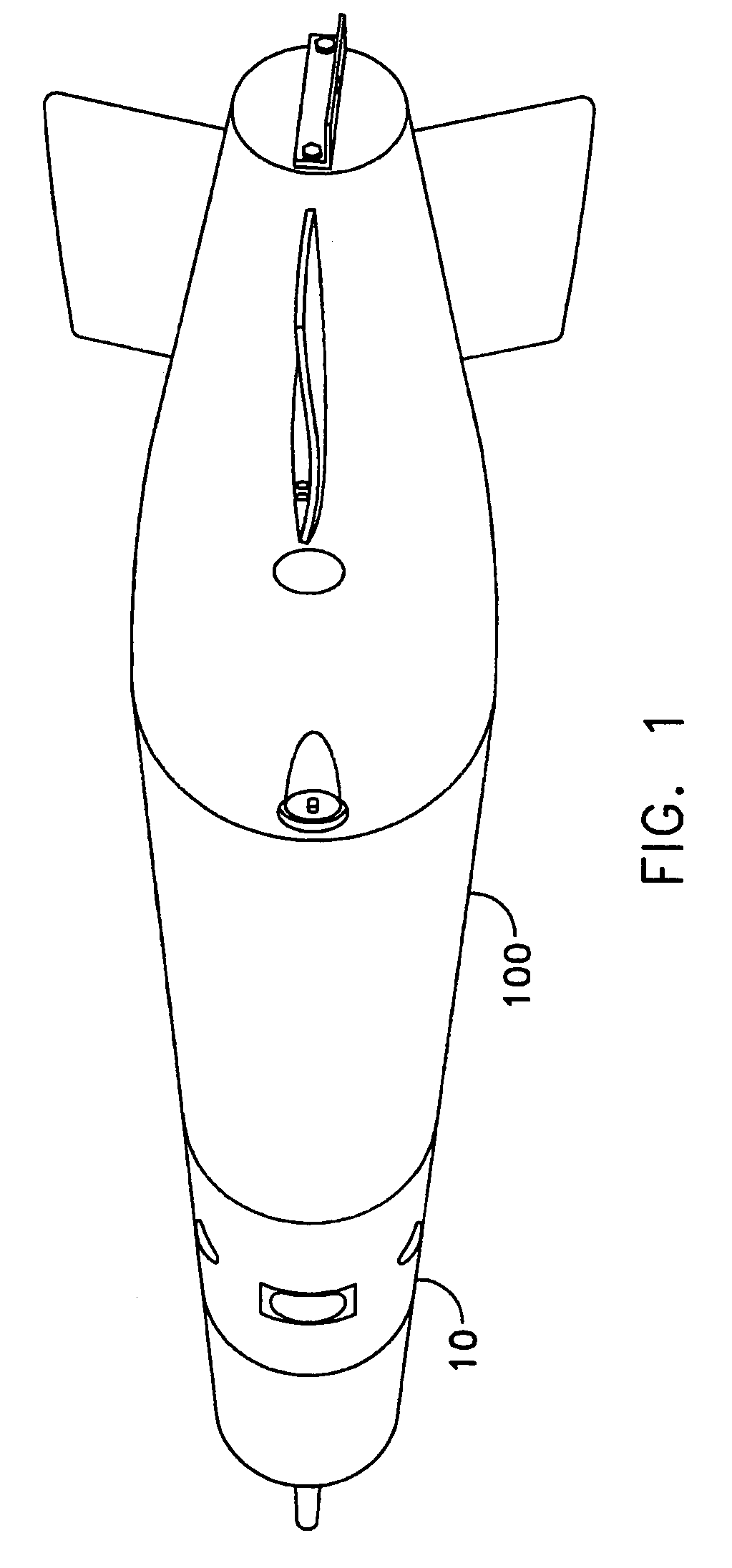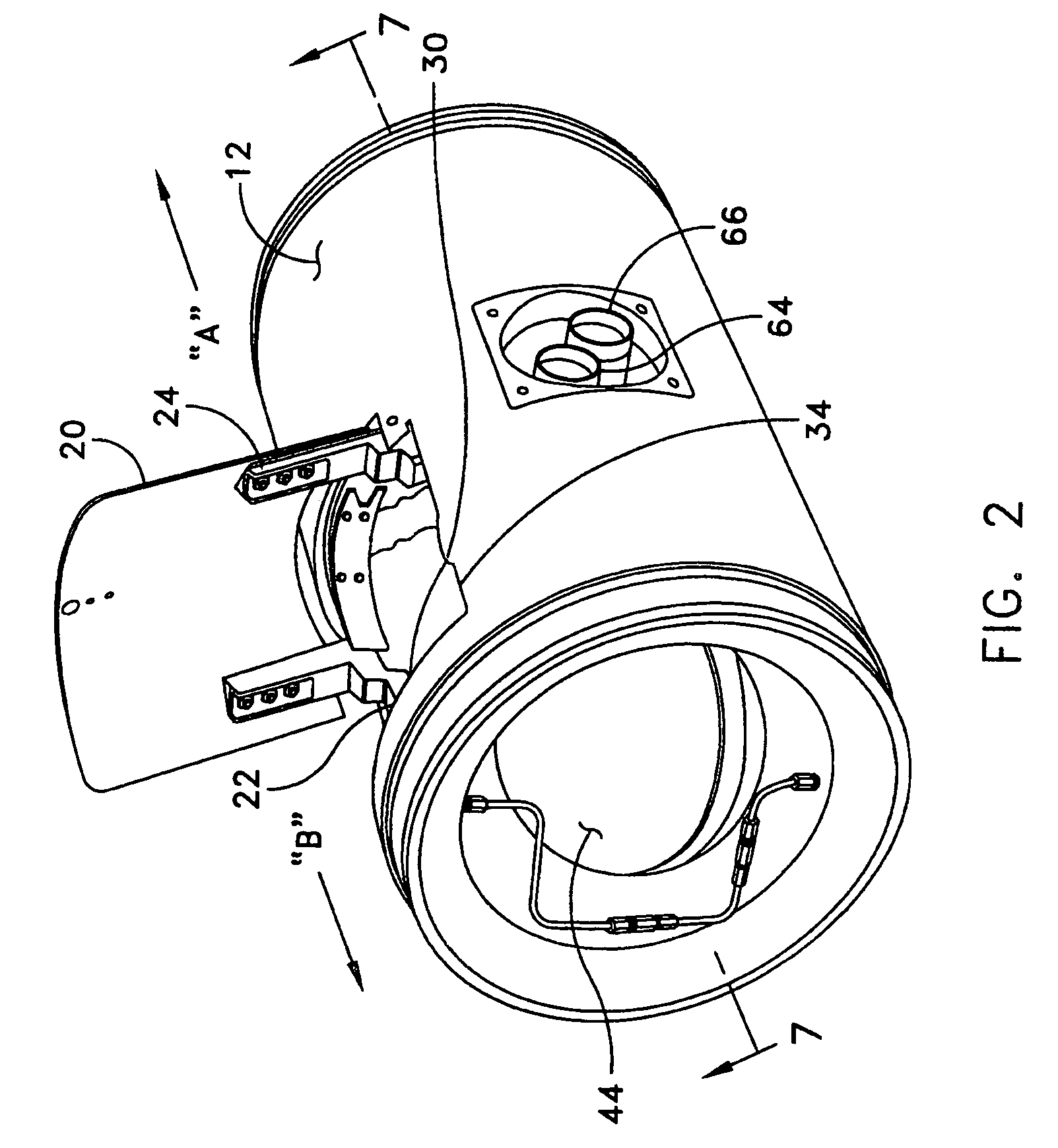Underwater vehicle deceleration and positive buoyancy assembly
a technology for underwater vehicles and positive buoyancy, which is applied in the direction of special-purpose vessels, tropedoes, transportation and packaging, etc., can solve the problems of reducing the possibility of having an affordable recovery system, excessive disassembly of the vehicle, and high cost of materials, so as to reduce the cost of flotation bags and less hydrodynamic loads
- Summary
- Abstract
- Description
- Claims
- Application Information
AI Technical Summary
Benefits of technology
Problems solved by technology
Method used
Image
Examples
Embodiment Construction
[0046]The vehicle deceleration and positive buoyancy assembly 10 of the present invention, hereinafter referred to the “assembly” is depicted in FIG. 1 as attached to a torpedo 100. The assembly 10 may be positioned on alternate undersea vehicles by modifying the assembly with methods that would be known to those skilled in the art. The assembly 10, shown in FIG. 2, prior to attachment to the torpedo 100, generally comprises a pair of doors 20 acting as pneumatically dampened hydrodynamic drag brakes with accompanying flotation bags 30 used for buoyant recovery of the torpedo. See FIG. 3 for the flotation bag 30 interior to the assembly 10 and secured by a break-away web 32; FIG. 4 for the flotation bag exterior to the assembly; and FIG. 5 for the flotation bags inflated and exterior to the assembly.
[0047]When recessed to a surface 12, the doors 20 act as concealing sleeves of the recovery flotation bags 30 and a storage cavity 34. The doors 20 (or systematically named hydrodynamic ...
PUM
 Login to View More
Login to View More Abstract
Description
Claims
Application Information
 Login to View More
Login to View More - R&D
- Intellectual Property
- Life Sciences
- Materials
- Tech Scout
- Unparalleled Data Quality
- Higher Quality Content
- 60% Fewer Hallucinations
Browse by: Latest US Patents, China's latest patents, Technical Efficacy Thesaurus, Application Domain, Technology Topic, Popular Technical Reports.
© 2025 PatSnap. All rights reserved.Legal|Privacy policy|Modern Slavery Act Transparency Statement|Sitemap|About US| Contact US: help@patsnap.com



